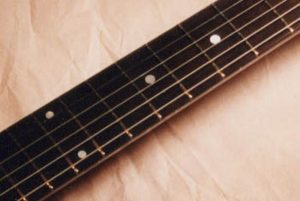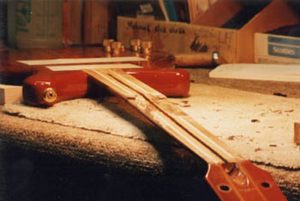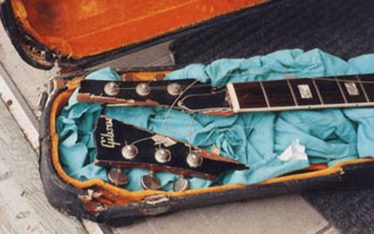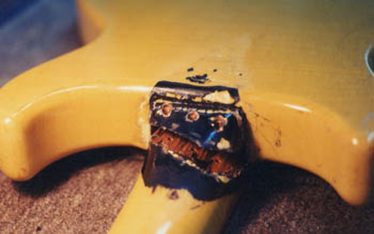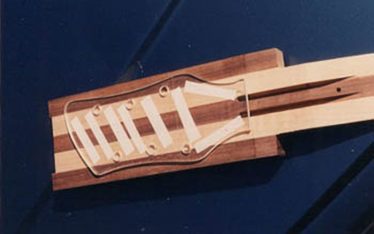Electric Guitar | Odyssey
A fisrt-class neck break
Using brass parts was a 1970s fashion.
Usually, a neck break occurs where the neck meets the head. This type of neck break, pictured here, is very rare. The mahogany of the neck was fractured, the ebony fretboard was broken, and the truss rod was bent — a first-class neck break.
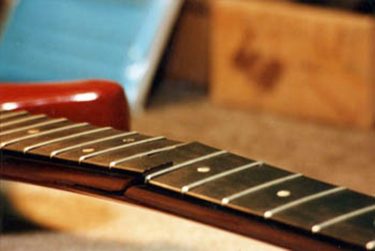
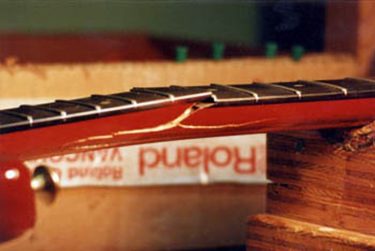
If your guitar is damaged
When you repair a damaged guitar, you really have to inspect the damage carefully first to see if it can go back to the original position or not. If small wood chips are in the cracks or the fracture seems to be squished, you should never, ever, force it back to the original spot.
Be patient!
Never, ever, force the damaged part back to the original spot!
Every case is different, so you should be very flexible in choosing the method to fix it. If you use force to repair it, you may make the original damage worse.
Inspecting the neck damage
I couldn’t inspect this damage well because it was such a complicated break. The damaged part didn’t move at all since the truss rod was also bent. In order to inspect the damage, the first thing I had to do was remove the fretboard to remove the truss rod. In this kind of case, you really have to start the actual repair in order to make an estimate, so it’s very important to first come to a clear agreement with the owner.
When I had a close look with the fretboard and truss rod removed, the parts seemed to go back to their original position.
Repairing the neck break
The glue had to go into every part of the fracture, and the neck had to be clamped well with a straight block.
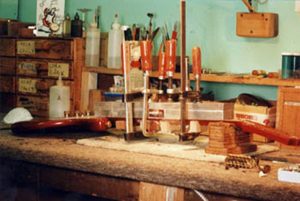
There isn’t always a guarantee, but the damaged part goes back well if there are no missing parts such as wood chips or finish chips in the way.
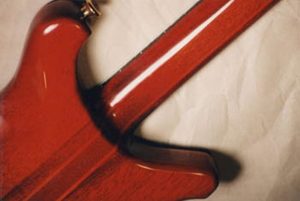
The two separated fretboards were glued individually, and then I put the frets back after sanding. You can’t tell clearly from this picture, but ebony is easier to make damage invisible compared to other types of wood. The damage was between the ninth and tenth frets.
